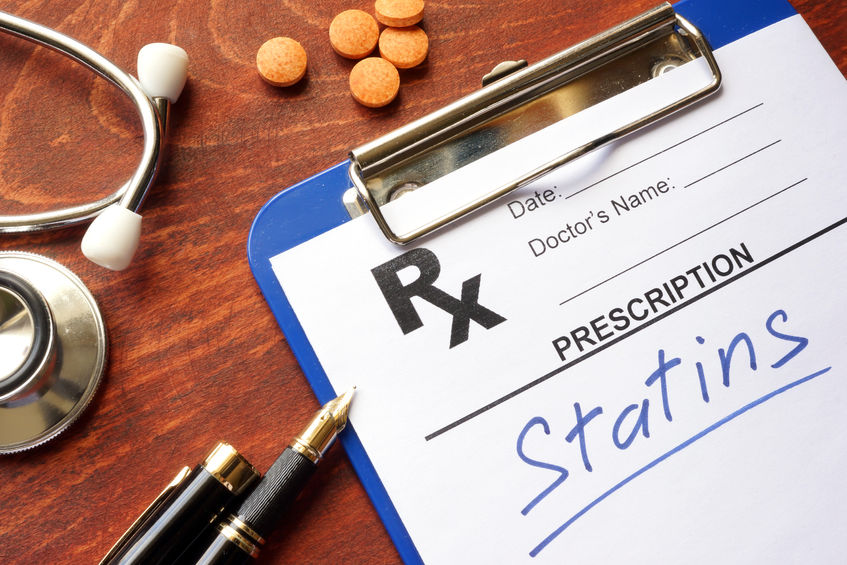Choosing Between two Goods – Statin Use and Exercise
I need to come out of hiding. For as long as I can remember, I have had high cholesterol. Back in the day, the target for cholesterol was less than “200 plus your age”: I was usually at or just slightly above that. Then the goal cholesterol changed to under 200, and gave about half of all patients (including myself) the diagnosis of high cholesterol dyslipidemia. Worse than that, I’m not currently taking a statin drug to lower my cholesterol.
The rationale was that cholesterol makes up some of the sludge that accumulates on the inside of blood vessels in patients with cardiovascular disease. It seemed very plausible to target cholesterol, and lowering cholesterol values became the goal of therapy. You may remember ads that urged you to know your number, or of patients dancing out of their physician’s office after their “number” came down.

Statins and Exercise!
Then a couple of things developed pharmacologically.
- First, it was shown that it’s not just cholesterol; lowering cholesterol by drugs other than statins does not seem to provide the same benefits as statin drugs.
- More recently, clinical studies have not been targeting the level of cholesterol, but rather targeting cardiovascular disease and placing patients on medium or high intensity statins based on their 10-year risk of cardiovascular disease.
But not everyone can take statin drugs. The problem that I share with many other patients is intolerance to statins. I was placed on Zocor™ (simvastatin). I took simvastatin regularly, but felt worse and worse, older and older. I was weak and could barely walk – much less exercise – while I was on simvastatin.
Eventually, I had to speak with my physician and make a choice – is it better to remain active and exercise, or is it better to take statin drugs?
There are two ways to look at the benefits of statin drugs (below). In The Norm Chronicles (Basic Books, New York, 2014), authors Michael Blastland and David Spiegelhalter examine how we perceive risk.
One way to look at statin drugs and their benefits is: “statins are shown to reduce the risk of heart attack for people over fifty by 30 percent”. Statins have a dramatic effect on cardiovascular disease, and if you are going to have a heart attack it is much better to be on a statin. But, the other way to look at statins is: “96 people in 100 will be unaffected if they take statins for ten years—they either would or would not have had a heart attack anyway—but might be vulnerable to side effects.”
As the use of statins has expanded, more patients assigned to statins are having adverse effects. Most frequently statins have been associated with muscle weakness.
So, a paper published late last year by physician N. John Bosomworth examined and provided suggestions for patients having difficulty exercising while on statin drugs. Patients should start and stabilize in an exercise program before starting statin drugs. If muscle issues develop, consider decreasing the dose or the frequency of the statin, or change to another statin. Supplementation with Vitamin D and/or Coenzyme Q10 appears to help some patients. And if all else fails, there are other drug choices that can help your cholesterol levels.
For those choosing between exercise and statins, there are some suggestions based on the benefits of exercise compared to those of statins. These are individual decisions based on patient risk factors, statin responses and the intensity of exercise.
In my case, I spoke with my physician and we agreed that it is probably better for me to exercise than to be sedentary on statins. But with some of the advances in drugs – and my advance in age – I may reconsider at some time and see if one of Dr. Bosomworth’s suggestions might help.
If you are considering starting statins, or are currently taking statins, it should be helpful to know that there are strategies that can help you use statins successfully or to maximize your health in the absence of statins. If you have concerns, speak with your prescriber or pharmacist before making any changes to your therapy.
Resources:
Gabarino-J: Cholesterol and Controversy: Past, present and Future. Scientific American blog (2011).
Bosomworth-NJ: Statin Therapy as Primary Prevention in Exercising Adults: Best Evidence for Avoiding Myalgia. J AM Board Fam Med: 29: 727-740 (2016).
http://www.jabfm.org/content/29/6/727











